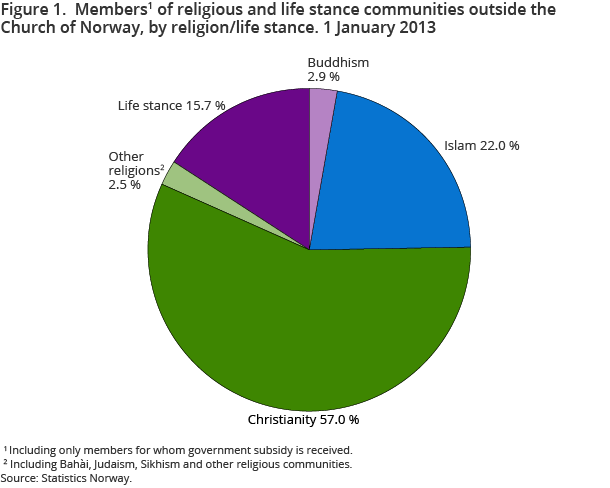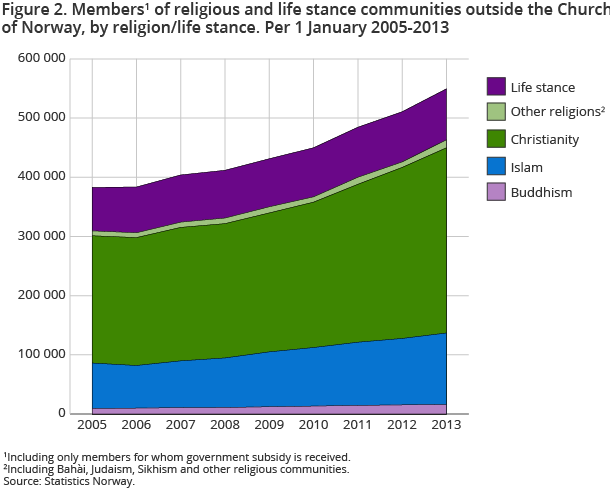Content
Published:
This is an archived release.
8 per cent increase in religious and life stance communities
At the beginning of this year, 10.9 per cent of the Norwegian population, or 549 400 persons, were members of religious and life stance communities outside the Church of Norway. This represents an increase of about 8 per cent compared to the previous year.
| 2013 | Percentage change | |||
|---|---|---|---|---|
| Members | Per cent | 2012 - 2013 | 2009 - 2013 | |
| 1Including only members for whom government subsidy is received. | ||||
| 2One community not represented in the statistics for 2012. | ||||
| Total | 549 400 | 100.0 | 7.6 | 27.4 |
| Baha'ism | 1 122 | 0.2 | 3.1 | 9.7 |
| Buddism | 16 001 | 2.9 | 3.7 | 30.6 |
| Hinduism | 6 797 | 1.2 | 19.5 | 29.8 |
| Islam | 120 882 | 22.0 | 7.7 | 30.3 |
| Judaism2 | 788 | 0.1 | 415.0 | -1.9 |
| Christianity | 312 925 | 57.0 | 8.3 | 33.3 |
| Sikhism2 | 3 323 | 0.6 | 193.3 | 22.5 |
| Philosophy | 86 061 | 15.7 | 1.6 | 6.1 |
| Other religious and philosophical communities | 1 501 | 0.3 | 23.2 | 142.9 |


As of 1 January 2013, 549 400 persons in Norway were members of religious and life stance communities; an increase of 39 000 compared with the previous year.
More than half of the members, 313 000, were members of Christian communities. A total of 86 000 were members of life stance communities and accounted for approximately 16 per cent of all members of communities. Furthermore, various Islamic communities accounted for around 22 per cent of the members, while the members of Buddhist, Hindu and Sikh communities accounted for 3 per cent, 1.2 per cent and 0.6 per cent of the members respectively.
Additional information
The statistics include members of religious and life stance communities based on annual applications for central government subsidies. Some communities do not apply for subsidies every year. Due to this fact, the number of members in some categories varies some years. Some communities never apply for subsidies.
Contact
-
Andreas Østhus
E-mail: andreas.osthus@ssb.no
tel.: (+47) 47 64 99 08
-
Andrea Ihler Evensen
E-mail: andreaihler.evensen@ssb.no
tel.: (+47) 93 06 06 87
